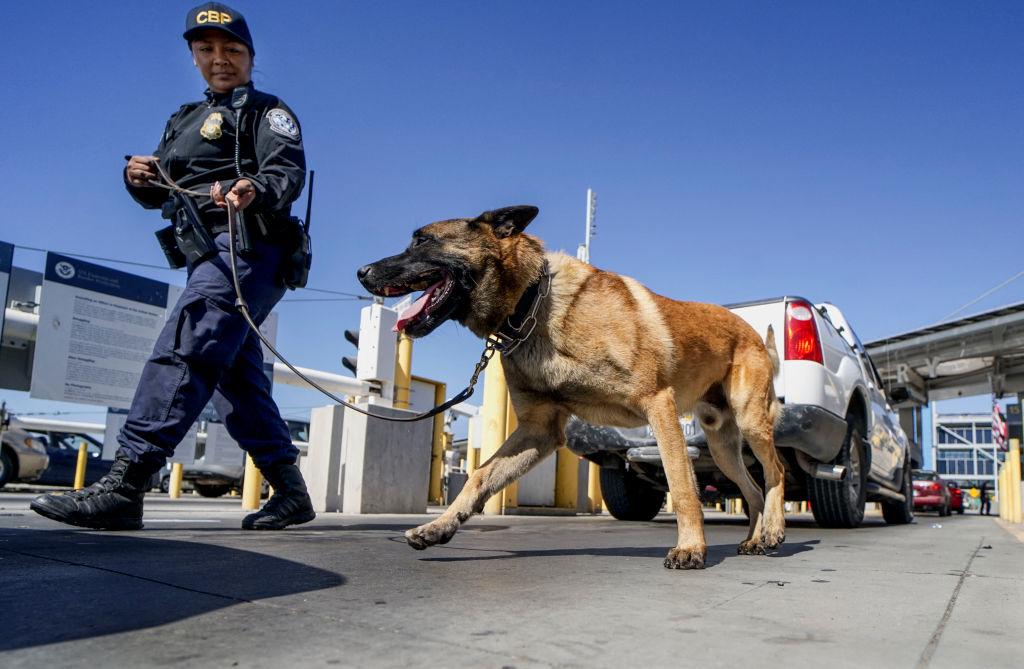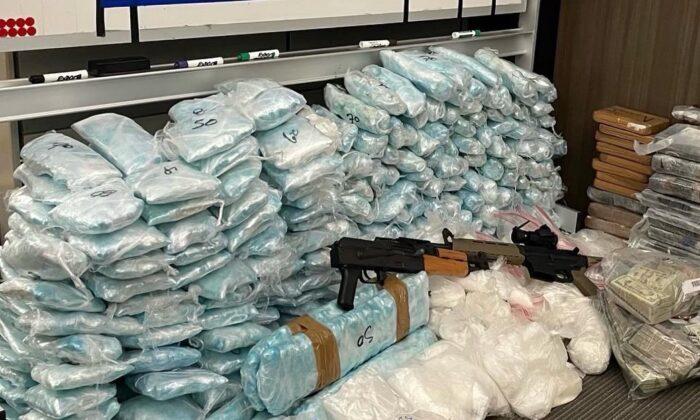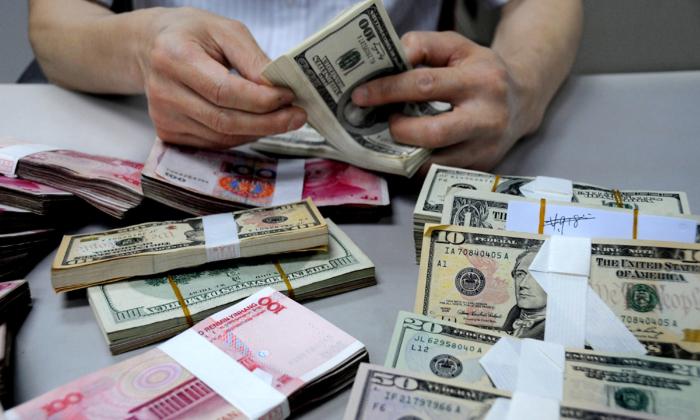Fentanyl overdose has become the leading cause of death for young Americans since 2019. U.S. authorities say that China remains the primary source of the precursor chemicals, which are then processed and manufactured into synthetic opioids by Mexican drug cartels to bring into the United States.
In response to the rising threat of illicit fentanyl, bipartisan lawmakers last year introduced the “End Fentanyl Act,” a bill intended to strengthen border enforcement in combatting the flow of fentanyl into the United States.
The Eradicating Narcotic Drugs and Formulating Effective New Tools to Address National Yearly Losses of Life (END FENTANYL) Act was introduced by Senator Rick Scott (R-Fla.) in June 2022 with bipartisan colleagues.

Deadly Drug
Fentanyl is a powerful synthetic opioid, up to 50 times more potent than heroin and up to 100 times stronger than morphine. Manufacturers of illegal drugs add fentanyl to heroin, cocaine, methamphetamines, and other drugs to make the drugs more powerful and cheaper to produce.Just two milligrams of the synthetic opioid—equivalent to 10–15 grains of table salt—is considered a lethal dose. Laboratory testing is the only way to know how much fentanyl is concentrated in a pill or powder.
In 2021, the number of drug overdose deaths in the United States surpassed 100,000. Illicit fentanyl accounted for over 64,000 of those deaths, which has doubled since 2019.
The majority of fentanyl is mass-produced in Mexico using chemicals from China before being pressed into pills or mixed with other counterfeit pills made to look like Xanax, Adderall, or oxycodone.
The counterfeit drugs are then sold to unaware buyers. Most people using fentanyl assume they are given heroin and mix it with other drugs or overdose.

Drug Issue Weaponized
The Chinese city of Wuhan is known as the fentanyl capital of the world. Following the initial outbreak of the coronavirus (COVID-19), disruptions to fentanyl production and supply in Wuhan set off a chain reaction that hit the production of fentanyl and methamphetamine in Mexico, which caused street drug prices to skyrocket across the United States.“China is linking the fentanyl issue and negotiations with other totally different issues like [the] Taiwan issue. So when Pelosi visited Taiwan, one of the ways in which China retaliated against the United States was to cease negotiations over the fentanyl issue,” Corr told the “China in Focus” program on NTD, a sister media outlet of The Epoch Times.
Beijing announced the suspension of bilateral talks and collaborations with the United States related to illegal immigrant repatriation, criminal justice assistance, climate talks, transnational crime, and “anti-drug programs.”
On the contrary, Westhoff found that some Chinese fentanyl producers were subsidized by the CCP.

He said that China has sought to encourage exports of these harmful and illegal drugs as they are seen as a vital part of its economy. And to grow these exports, it started offering subsidies and tax breaks for chemical companies that produce and export those drugs.
“Not only is China not doing enough to contain this industry. They are actually encouraging this industry through a series of tax breaks, subsidies, and other grants,” Westhoff said.
When asked about China’s commitment to the U.S. in banning the substances in December 2018, Westhoff said China has no real intention to follow through.
“I think we can take China at its word that it has gone about banning all of the fentanyl analogues, the fentanyl-like drugs. Now, doing that on paper is one thing, but the enforcement is the part where China has really lagged,” he said.
“They don’t have enough people on the ground to enforce the laws they have on the book. And often, there are competing layers of government that are at odds with each other. So you might have a provincial official who wants to let these companies keep doing what they’re doing because it brings in more revenue for the area.”
He added that manufacturers only need to slightly tweak the chemical formula of fentanyl to make it legal.
When Weissoff visited a Chinese fentanyl-producing lab, he found a large amount of the chemicals sitting around in tall piles on the laboratory floor, reminding him of “the scene in [the 1983 film] Scarface, where [American actor] Al Pacino is sitting at the table full of massive piles of cocaine.”

Combatting the Drug Crisis
The U.S. Drug Enforcement Administration (DEA), in its January 2020 report (pdf), laid out clearly that China was the “primary source” of fentanyl trafficked into the United States.“China remains the primary source of fentanyl and fentanyl-related substances trafficked through international mail and express consignment operations environment, as well as the main source for all fentanyl-related substances trafficked into the United States,” the DEA report says.
Included in the bill is the Synthetics Trafficking and Overdose Prevention (STOP) Act, which aims at curbing the flow of opioids sent through the mail system, and increases the coordination between the U.S. Postal Service and the U.S. Customs and Border Protection.
The STOP Act would require that all mail from foreign countries coming through the U.S. Postal Service have package-level detail. It would also require accurate advanced electronic data (AED) for international mail shipments to be submitted to U.S. Customs and Border Protection before shipping.
Under pressure from the Trump administration, China was forced to increase the compliance rate for submitting international package data.
The postal service said the STOP Act significantly improved its ability to seize fentanyl and synthetic opioids from the U.S. Mail.

Evading US Regulations
In May 2019, at the urging of the Trump administration, Beijing placed all forms of fentanyl and its known analogues known at the time on its drug export control list. However, illicit fentanyl from China remains widely available in the United States.To evade U.S. regulations, Chinese fentanyl producers shifted their primary market to Mexico. Mexican cartels use precursor compounds imported from China to manufacture large quantities of fentanyl products, which are then smuggled into the United States.
Mexican drug trafficking organizations have previously been involved in producing opium poppy, a flowering plant used in the production of heroin. But as Mexican authorities stepped up efforts to eradicate the country’s poppy fields, the drug cartels turned to synthetic fentanyl, which is much cheaper to obtain the ingredients and highly profitable.
The DEA estimates that a kilogram (about 2.2 pounds) of powdered fentanyl from China can fetch a few thousand dollars. And if transformed the powders into hundreds of thousands of counterfeit pills, it can bring in millions of dollars of profits through street sales.
Driven by high profits, drug traffickers use private cars, pedestrians, and commercial vehicles to smuggle fentanyl into the United States through ports of entry.

Laundering Money
The August 2021 report (pdf) by the U.S.-China Economic and Security Review Commission said Beijing’s cooperation with the U.S. has lagged in money laundering investigations, criminal prosecution, and legal assistance in ongoing cases.“Chinese regulatory authorities continue to delay requests for access to inspect and investigate potential sites of illegal chemical production where precursors are made. [And] requests are often delayed for days, allowing any illegal operation to vacate or clean up the premises,” the report said.
In addition, China’s financial system has also been used to launder money for Mexican drug cartels. In a single money laundering case in November 2018, several Chinese nationals were arrested by U.S. authorities on charges of laundering between $25 to $65 million for drug cartels.
According to the report, Chinese money launderers leverage encrypted mobile communications apps like WeChat to move vast sums of money from the United States to China and then back to Mexico with “great speed, discretion, and efficiency.”
An investigation revealed that once Chinese money launders move illicit drug proceeds into China’s financial system, some of that money is used to purchase consumer goods or more precursor chemicals, recycling the money back into the economy. And then, the money, consumer goods, or precursors are transferred back out of China to the drug cartel in Mexico.
“Since they are difficult to track, convertible virtual currencies or cryptocurrencies such as Bitcoin, Ethereum, or Monero have become a popular medium,” the report added.






